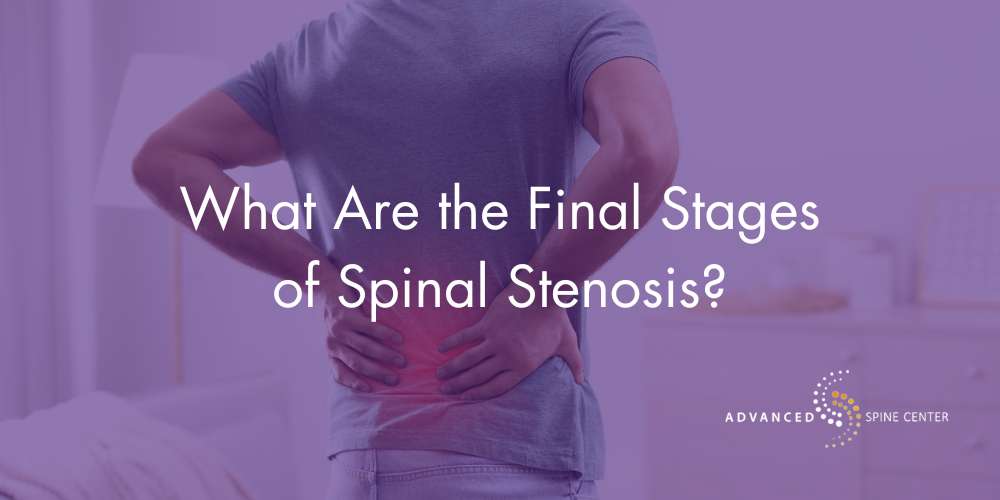Table of Contents
As spinal stenosis progresses to its final stages, the narrowing within the spine can cause significant discomfort and mobility issues. The increasing constriction of the spinal canal may cause symptoms such as severe back pain, numbness, and muscle weakness that can extend into the limbs.
In these final stages, treatment options focus on managing the symptoms of spinal stenosis and improving your quality of life. These treatments typically include a combination of medication, physical therapy, and possible surgical intervention to alleviate pressure on the spinal cord and nerves.
If you’re seeking relief from severe spinal stenosis, contact the Advanced Spine Center in Plano, TX, at (972) 499-5457 or contact us online to explore your treatment options and learn more about what the final stages of spinal stenosis entail.
What Is Spinal Stenosis?
Spinal stenosis is when spaces within the spine narrow, putting pressure on the spinal cord and nerve roots.
A tunnel called the spinal canal runs through the vertebrae in your spine. The spinal canal protects your spinal cord. When this tunnel narrows, the spinal cord and the spinal nerves branching off it experience nerve compression, causing pain, numbness, and muscle weakness.
Causes of spinal stenosis include genetic factors and age-related changes such as osteoarthritis, disc herniation, thickened ligaments, bone spurs, and spinal injuries.
What Are the Symptoms of Spinal Stenosis?
Symptoms often develop gradually and can range from mild to severe. Common signs of mild spinal stenosis include persistent back pain, numbness, tingling, and weakened muscles, particularly in the arms or legs. Nerve pain can also cause difficulty walking or maintaining balance due to the pressure on the spinal cord and nerve roots. In severe spinal stenosis cases, individuals may experience bladder or bowel dysfunction.
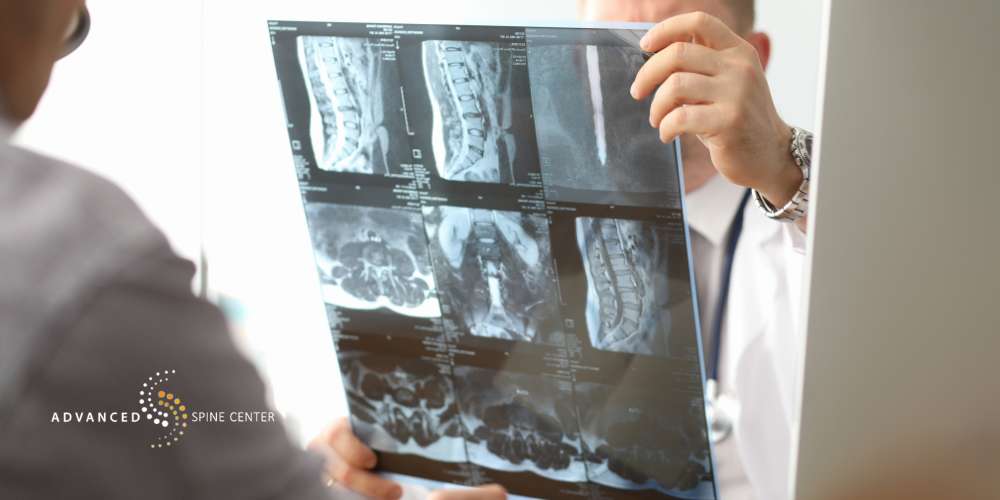
What Are the Most Common Types of Spinal Stenosis?
Spinal stenosis can manifest in different forms, each affecting distinct spine regions. Common types include lumbar, thoracic, and cervical stenosis. Lumbar stenosis occurs in the lower back, while cervical spine stenosis affects the neck vertebrae. Thoracic stenosis occurs in the upper and middle back. Understanding these different forms is crucial for accurate diagnosis and effective treatment.
Lumbar Spinal Stenosis
Lumbar spinal stenosis is when the spinal canal in the lower back narrows, putting pressure on the spinal cord and nerve roots. This condition can cause significant discomfort in the affected vertebrae.
Symptoms typically include persistent lower back pain, numbness, tingling, and muscle weakness in the legs. In cases of severe lumbar stenosis, patients may struggle with walking, standing for extended periods, and maintaining balance.
To manage the symptoms, tricyclic antidepressants can be prescribed to reduce pain stemming from nerve compression. Other treatment options may include lumbar injections, lumbar fusion, or lumbar revision.
Foraminal Stenosis
Foraminal stenosis occurs when the foramina, the small openings where nerve roots exit the spinal column, become narrowed.
This condition leads to nerve compression, resulting in pain, numbness, tingling, and muscle weakness along the affected nerve’s path. Treatment options include physical therapy and medications to manage pain and inflammation, while severe cases may require surgical interventions to widen the foramina and alleviate nerve pressure.
This condition can affect various parts of the spine and contribute to conditions like lumbar, thoracic, and cervical spinal stenosis.
Central Canal Stenosis
Foraminal stenosis occurs when the foramina, the small openings where nerve roots exit the spinal column, become narrowed.
This condition leads to nerve compression, resulting in pain, numbness, tingling, and muscle weakness along the affected nerve’s path. Treatment options include physical therapy and medications to manage pain and inflammation, while severe cases may require surgical interventions to widen the foramina and alleviate nerve pressure.
This condition can affect various parts of the spine and contribute to conditions like lumbar, thoracic, and cervical spinal stenosis.
Central Canal Stenosis
Central canal stenosis is a spinal condition characterized by the narrowing of the central spinal canal, which houses the spinal cord and nerve roots.
This narrowing can compress the spinal cord, leading to symptoms such as lower, middle, and upper back pain, numbness, tingling, and muscle weakness that may extend to the arms or legs.
Maintaining a healthy weight and engaging in different types of spinal stenosis exercise can help manage symptoms.
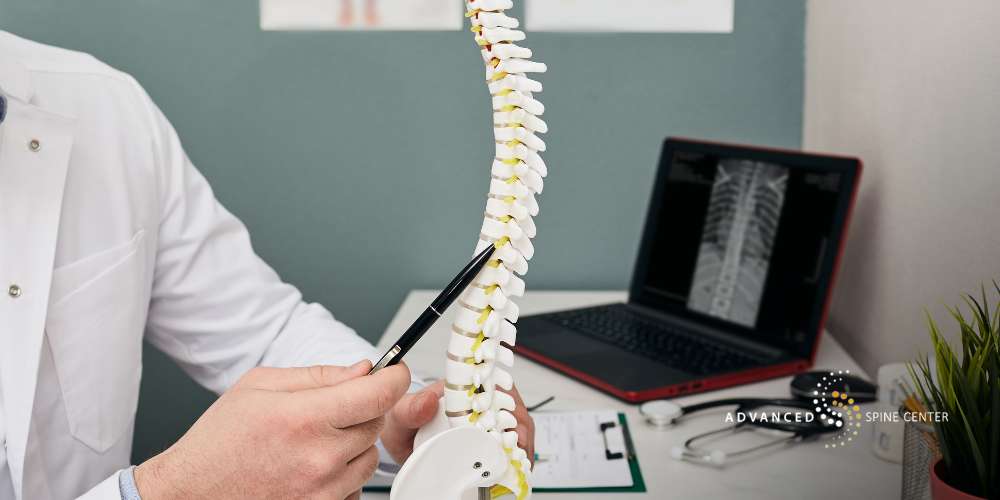
How Serious Is Spinal Stenosis?
The severity of spinal stenosis depends on the extent of spinal canal narrowing and nerve compression. In the early stages, you might experience occasional discomfort and manage symptoms with conservative treatments like physical therapy and nonsteroidal anti-inflammatory drugs for pain relief.
Moderate spinal stenosis can cause persistent symptoms such as pain, numbness, tingling, muscle weakness, and difficulty with walking or balance. Severe stenosis can cause a loss of bladder or bowel control and permanent nerve damage.
What Is Considered Severe Spinal Stenosis?
The spinal stenosis grading system is a clinical tool used to evaluate the stages of spinal stenosis by assessing the degree of narrowing in the spinal canal and its effect on the spinal cord and nerve roots. This grading system categorizes the condition into grades, ranging from mild to severe:
- Grade 0: No stenosis. The spinal canal is normal with no narrowing.
- Grade 1 (Mild): Minor spinal canal narrowing without significantly impacting the spinal cord or nerve roots. Symptoms are often minimal and manageable with conservative treatments.
- Grade 2 (Moderate): More noticeable narrowing that starts to compress the spinal cord or nerve roots. Pain, numbness, and muscle weakness may become more pronounced and require more intensive management.
- Grade 3 (Severe): Significant narrowing with substantial compression of the spinal cord and surrounding soft tissue. This final stage involves severe symptoms like intense pain and numbness, muscle weakness, and mobility issues. Immediate medical help is usually necessary.
An MRI scan is commonly used to provide detailed images that help doctors evaluate the extent of canal narrowing and its effects on the spinal cord and surrounding soft tissue.
Severe Spinal Stenosis Symptoms
When spinal stenosis reaches a severe stage, the symptoms can manifest as intense and persistent back or neck pain, numbness, tingling sensations, and other neurological symptoms that can radiate to the arms and legs.
Muscle weakness is common, often leading to difficulty walking, maintaining balance, and performing everyday activities. In advanced cases, severe spinal stenosis can cause bladder or bowel dysfunction and even lead to permanent nerve damage.
Treatment options may include physical therapy, corticosteroid injections, and surgery to manage symptoms and relieve pressure on the spinal cord and nerves.
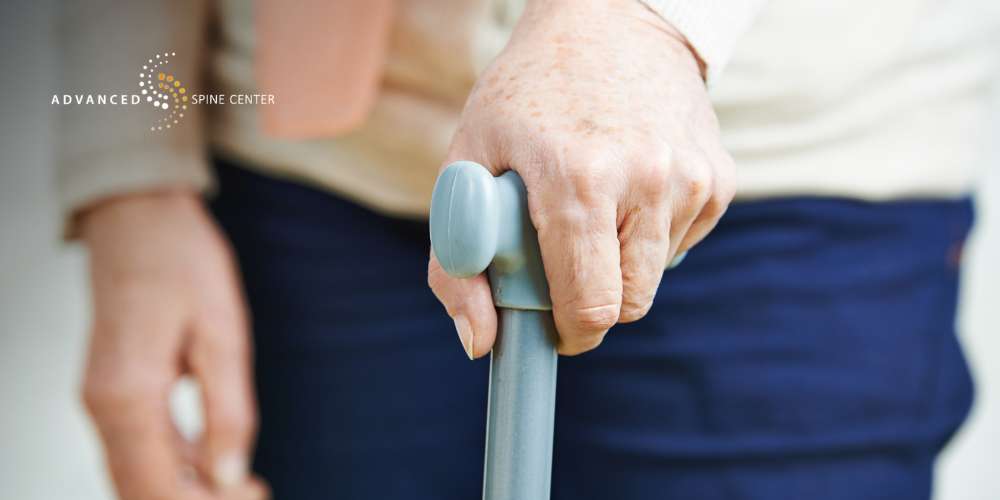
Is Spinal Stenosis a Permanent Disability?
Spinal stenosis can potentially lead to a permanent disability, especially if it causes significant compression of the spinal cord, resulting in severe pain and neurological symptoms.
In these cases, you might experience chronic pain and impaired mobility, which can require assistive devices such as walkers or wheelchairs.
While some patients can manage symptoms with treatments like physical therapy and medications, others may experience lasting disabilities that impact their daily lives. Early diagnosis and treatment are essential to managing the condition and minimizing the risk of permanent disability.
What Are the Final Stages of Spinal Stenosis?
Symptoms worsen in the final stages of spinal stenosis. Individuals typically experience spinal instability, severe leg pain, and leg or arm numbness. These symptoms indicate reduced nerve function and severely limit mobility and daily activities.
Significant nerve compression in the spinal canal can also lead to numbness in the lower extremities and a loss of bowel and bladder control.
Things to Avoid with Severe Spinal Stenosis
Avoiding activities that exacerbate symptoms or strain the spine is important with severe spinal stenosis.
Refrain from high-impact exercises, heavy lifting, and prolonged standing or walking, as these can increase pain and discomfort. It’s essential not to adopt a mindset of “pushing through the pain,” as this can lead to further injury and worsen symptoms.
Instead, it’s a good idea to work with a physical therapist to develop a safe and effective exercise regimen tailored to your condition, focusing on gentle movements that maintain mobility without aggravating the spine.
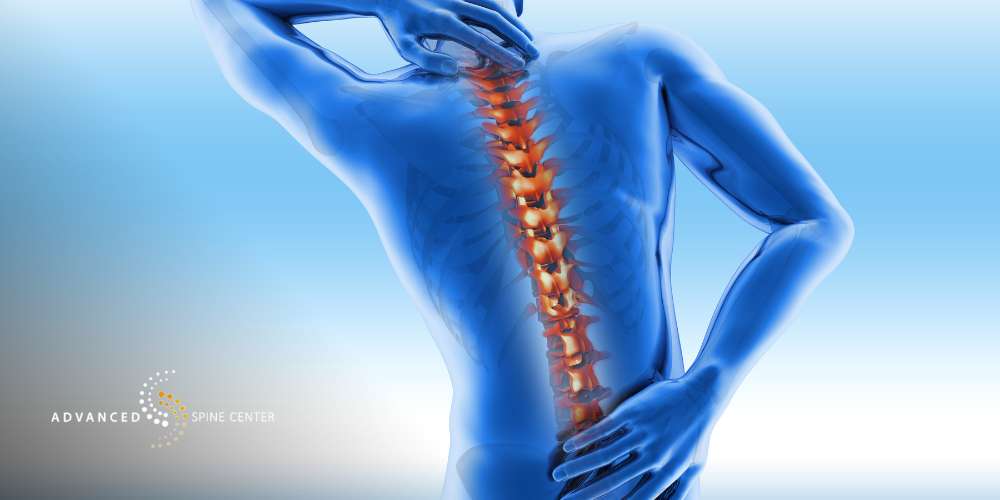
What Happens If Spinal Stenosis Is Left Untreated?
If spinal stenosis is left untreated, the condition can progressively worsen, leading to severe and debilitating symptoms.
Persistent nerve compression is likely to result in chronic pain, numbness, and muscular weakness. Over time, untreated spinal stenosis can cause permanent nerve damage and a loss of bodily functions.
It is essential to treat spinal stenosis promptly to alleviate symptoms, prevent further deterioration, and maintain overall spinal health and function.
Cauda Equina Syndrome
Cauda equina syndrome is a serious medical condition caused by the compression of the cauda equina, a bundle of nerve roots located at the lower end of the spinal cord.
This compression leads to a range of severe symptoms, including intense lower back pain, loss of sensation or numbness in the legs, and muscle weakness in the lower extremities. It can also cause bladder and bowel dysfunction and numbness in the saddle area (the region around the buttocks and inner thighs).
Cauda equina syndrome often requires urgent back surgery to relieve pressure on the nerves and prevent permanent damage.
How Does Spinal Stenosis Affect the Bowels and Bladder?
Spinal stenosis can affect the bowels and bladder when the nerves responsible for controlling these functions are significantly compressed.
This nerve compression can lead to symptoms like urinary incontinence, increased frequency and urgency to urinate, difficulty starting or stopping urination, and bowel dysfunction, including constipation or loss of bowel control.
These issues occur because the disrupted nerve signals interfere with the normal functioning of the bladder and bowels, making it challenging to control these bodily functions as usual.

Contact the Advanced Spine Center for Spinal Stenosis Surgery in Plano, TX
If you’re experiencing severe symptoms of spinal stenosis and are considering surgical options, contact the Advanced Spine Center in Plano, TX, for a consultation.
Our team specializes in spine treatments like spinal fusion surgery, which can help alleviate pain by stabilizing the spine and relieving pressure on compressed nerves.
During your visit, a comprehensive physical exam will be conducted to assess your condition and determine the best treatment plan tailored to your needs.
Don’t let spinal stenosis control your life- call (972) 499-5457 or contact us online to explore effective solutions and regain your quality of life.

